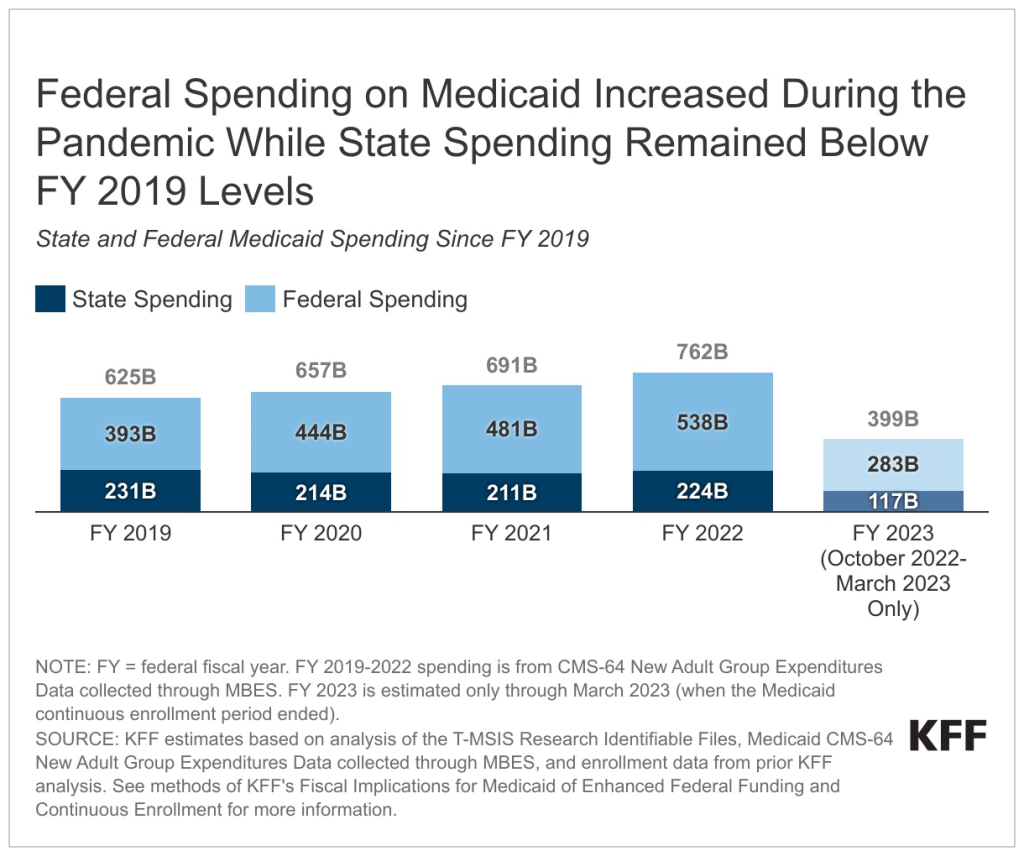[ad_1]
A new KFF analysis reveals that states won over $117 billion in enhanced federal Medicaid investment in trade for pausing disenrollments right through the primary 3 years of the pandemic. The injection of federal cash enabled states to spend much less of their very own budget on Medicaid at the same time as enrollment rose by way of greater than 23 million other folks nationally and general Medicaid spending higher by way of billions of bucks.
Pandemic-era enrollment protections expired in March, and in April states had been accepted to renew disenrollments of people who find themselves now not eligible for Medicaid or who don’t entire the eligibility renewal procedure.
As the improved federal investment is phased out and in the long run eradicated subsequent 12 months, states’ spending on Medicaid will most likely build up — regardless that the affect will range by way of state. The scale of the rise in state Medicaid spending will rely in large part on adjustments in general spending expansion, which in flip replicate how temporarily persons are disenrolled, what number of new other folks come directly to Medicaid, and the way spending in line with individual within the Medicaid program will exchange.

States that experience no longer followed Medicaid growth below the Inexpensive Care Act won a disproportionately huge percentage of the greater than $117 billion in enhanced federal budget that was once allotted when enrollment protections had been in impact. That’s since the further investment got here within the type of enhanced federal matching cash that didn’t follow to spending on Medicaid enrollees who had been made eligible for this system during the ACA growth.
Non-expansion states won 27 % of the improved investment in spite of accounting for handiest 22 % of all Medicaid spending, the research reveals.
The overall research, “Fiscal Implications for Medicaid of Enhanced Federal Funding and Continuous Enrollment,” contains knowledge appearing how a lot every state won in enhanced federal investment from January 2020 thru March 2023.
Similar assets:
Medicaid Enrollment and Unwinding Tracker
How Many People Might Lose Medicaid When States Unwind Continuous Enrollment?
10 Things to Know About the Unwinding of the Medicaid Continuous Enrollment Provision
[ad_2]
Source link
